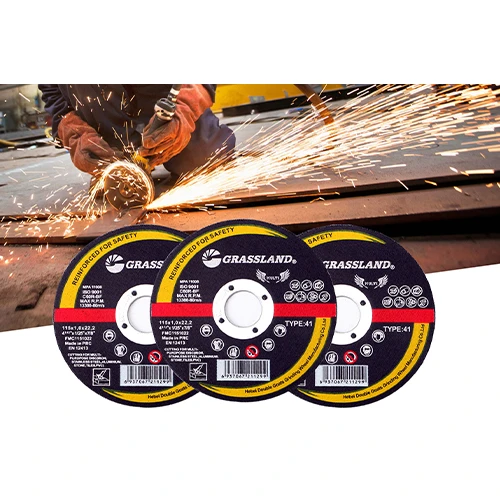Understanding Cut-Off Blades for Metal A Comprehensive Guide
Cut-off blades, particularly those designed for metalworking, play a critical role in various industrial applications, offering precision and efficiency in cutting operations. In this article, we will delve into the characteristics, types, applications, and maintenance of cut-off blades for metal, equipping you with the knowledge to make informed choices in your projects.
What is a Cut-Off Blade?
A cut-off blade is a circular saw blade specifically designed for cutting through hard materials like metal, concrete, and masonry. Unlike traditional blades, these specialized components are engineered to handle the unique challenges presented by metallic materials. They often feature abrasive compositions or hard materials that enhance their cutting performance and life span.
Types of Cut-Off Blades
1. Abrasive Cut-Off Blades These blades are made from a composite material that includes aluminum oxide or silicon carbide. They are lightweight and inexpensive, making them common in various applications. However, abrasive blades tend to wear down quickly and may produce more heat during cutting.
2. Diamond Cut-Off Blades Designed for high-performance applications, diamond blades feature synthetic diamond particles embedded in their segments. They provide precision cutting and a longer life span than abrasive blades, making them ideal for heavy-duty tasks. They are primarily used in specialized metalwork, including cutting through reinforced concrete and steel.
3. Carbide-Tipped Cut-Off Blades These blades come equipped with carbide tips that are welded to the blade's edge. They're designed for durability and longevity, often used in applications where precision is paramount. They can handle tougher materials and deliver cleaner cuts with reduced wear.
4. TCT (Tungsten Carbide Tipped) Blades TCT blades combine the benefits of carbide tips with high-quality steel bodies. This makes them versatile for various applications, including non-ferrous metals and thin-sheet metals.
Applications of Cut-Off Blades for Metal
Cut-off blades are utilized in numerous industries and applications, including
- Construction These blades are prevalent in cutting rebar, structural steel, and other metallic components for building and construction. - Fabrication In metal fabrication, precision is key. Cut-off blades help achieve accurate cuts in various metal gauges and types. - Automotive The automotive industry employs cut-off blades for trimming metal parts, making repairs, and in manufacturing processes. - Metal Recycling Cut-off blades are crucial in recycling metal scrap, allowing companies to effectively break down and process various metal types.
cut off blade for metal

Factors to Consider When Choosing a Cut-Off Blade
When selecting a cut-off blade for your metal cutting needs, consider the following factors
1. Material Compatibility Different blades are suitable for various metal types. Ensure you choose a blade that can handle the specific metal you will be working with.
2. Blade Diameter The size of the blade will affect the cutting depth and speed. Larger blades can cut deeper but may require more power, whereas smaller blades offer more control for detailed work.
3. Speed Rating Ensure that the blade's RPM (revolutions per minute) rating matches your cutting tool. Using a blade at speeds higher than its rating can lead to dangerous breakage.
4. Thickness The thickness of the blade will affect cutting performance and durability. Thicker blades may handle tougher materials better, while thinner blades provide faster cuts.
Maintenance of Cut-Off Blades
To prolong the life of your cut-off blades and maintain safety, follow these maintenance tips
- Clean After Use Metal filings and residues can cause corrosion. Clean the blades thoroughly after each use. - Inspect Regularly Check for chips, cracks, or other signs of wear. Damaged blades should be replaced immediately to avoid accidents. - Store Properly Store blades in a dry environment, preferably in protective cases to minimize damage.
Conclusion
Cut-off blades designed specifically for metal are essential tools for numerous industries, providing efficient and precise cutting solutions. By understanding the types, applications, and maintenance needs of these blades, users can optimize their cutting processes and achieve superior results. Whether you are in construction, fabrication, or metal recycling, selecting the right cut-off blade will enhance your productivity and safety on the job.
Post time:Dec - 17 - 2024

















